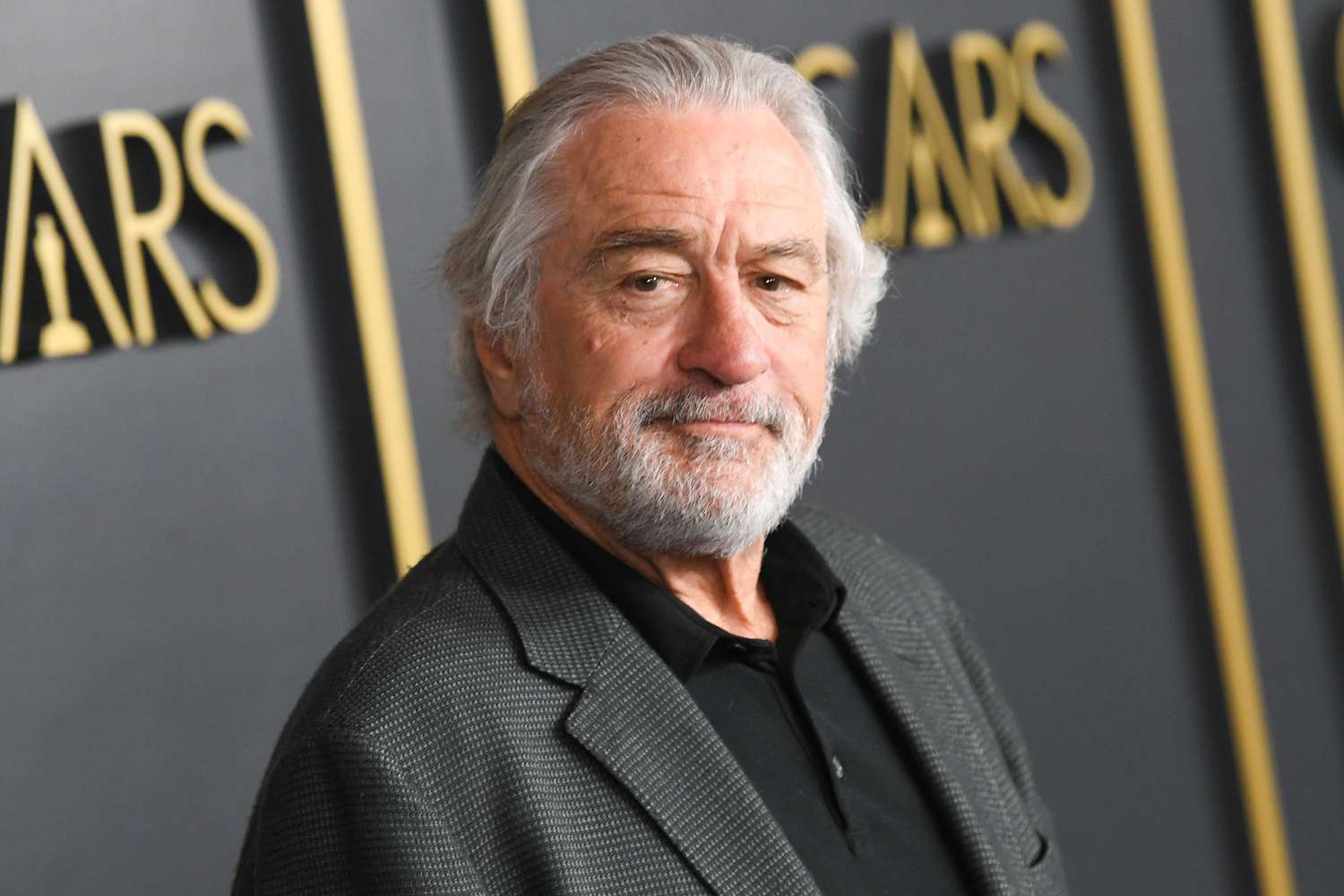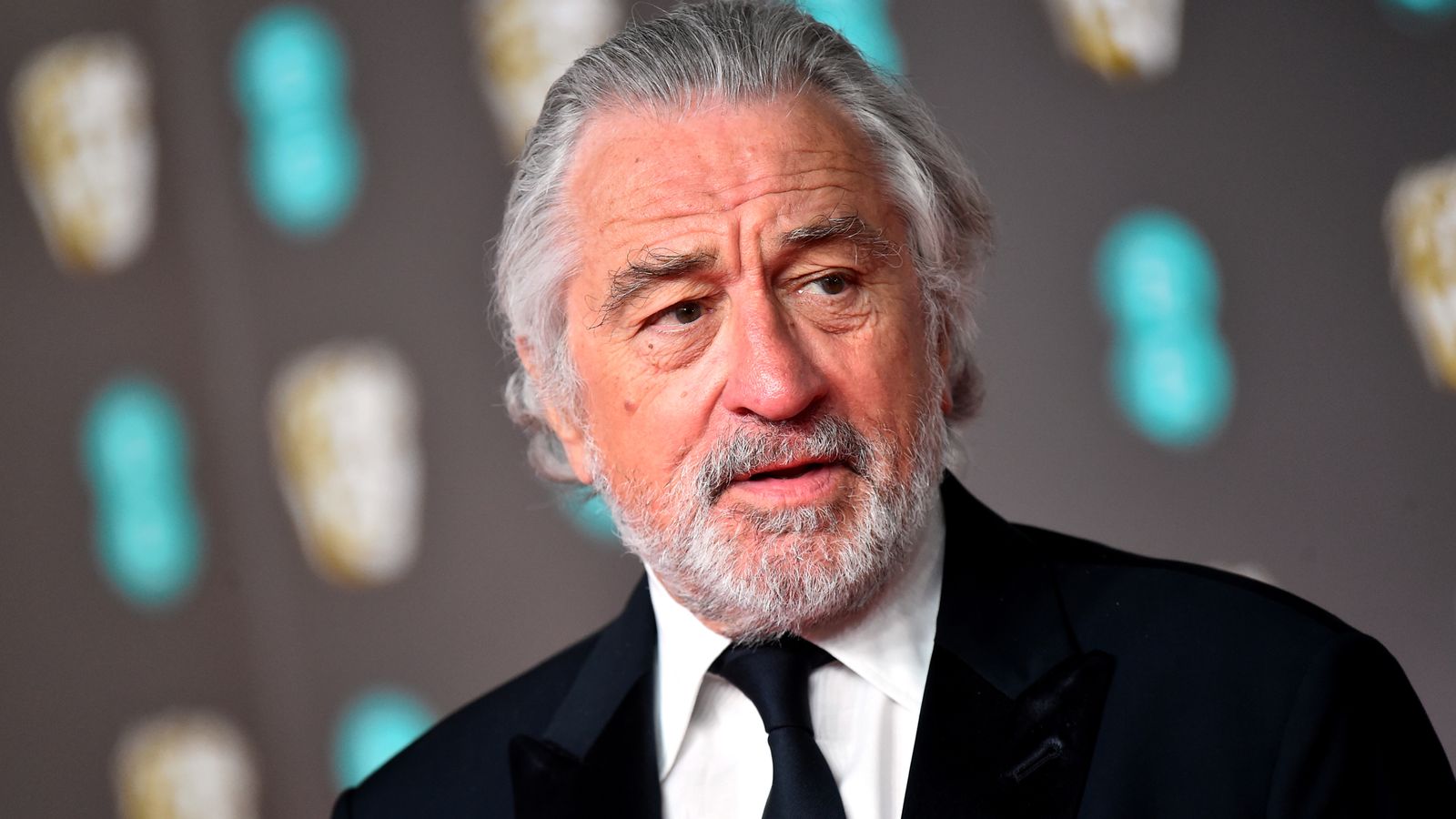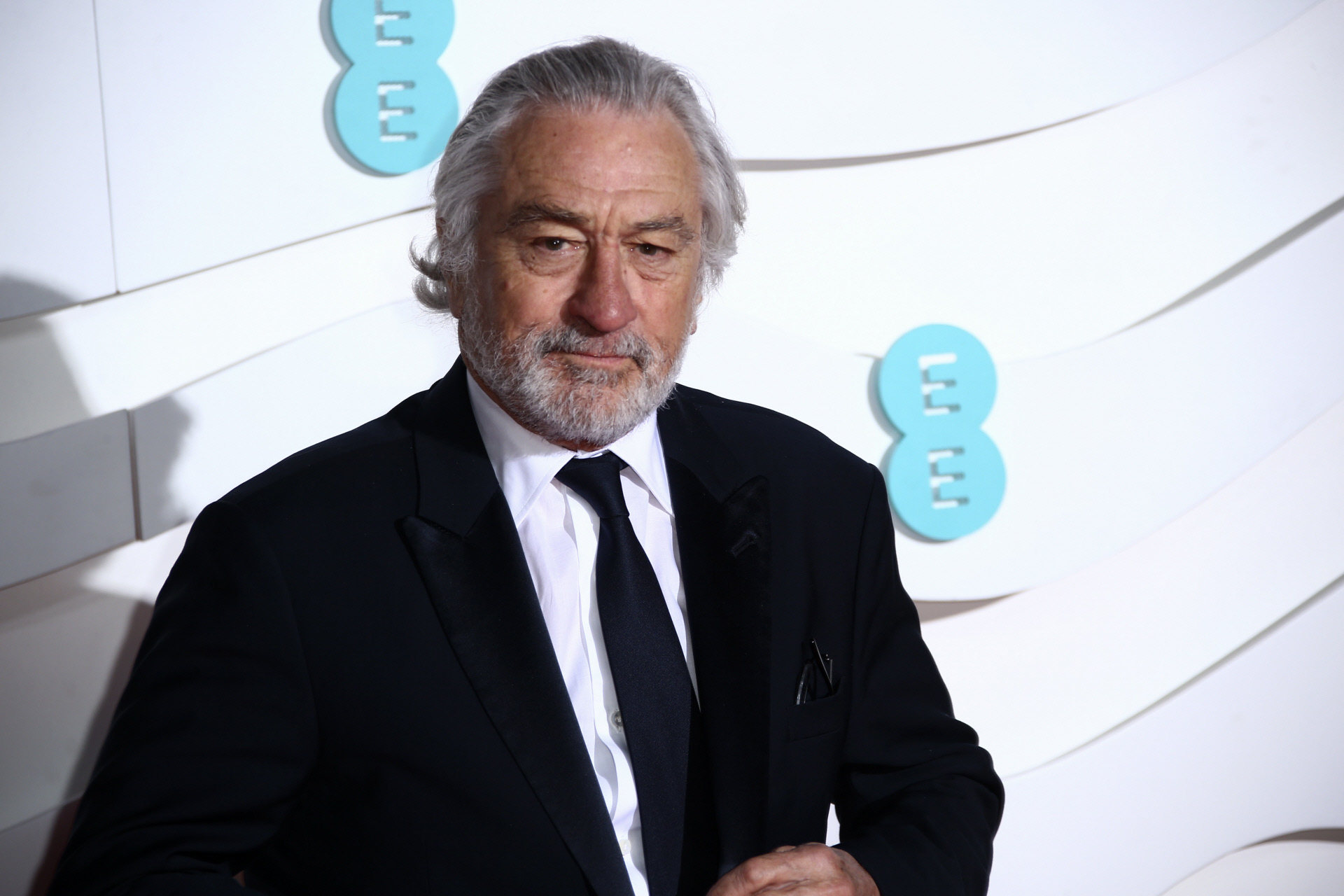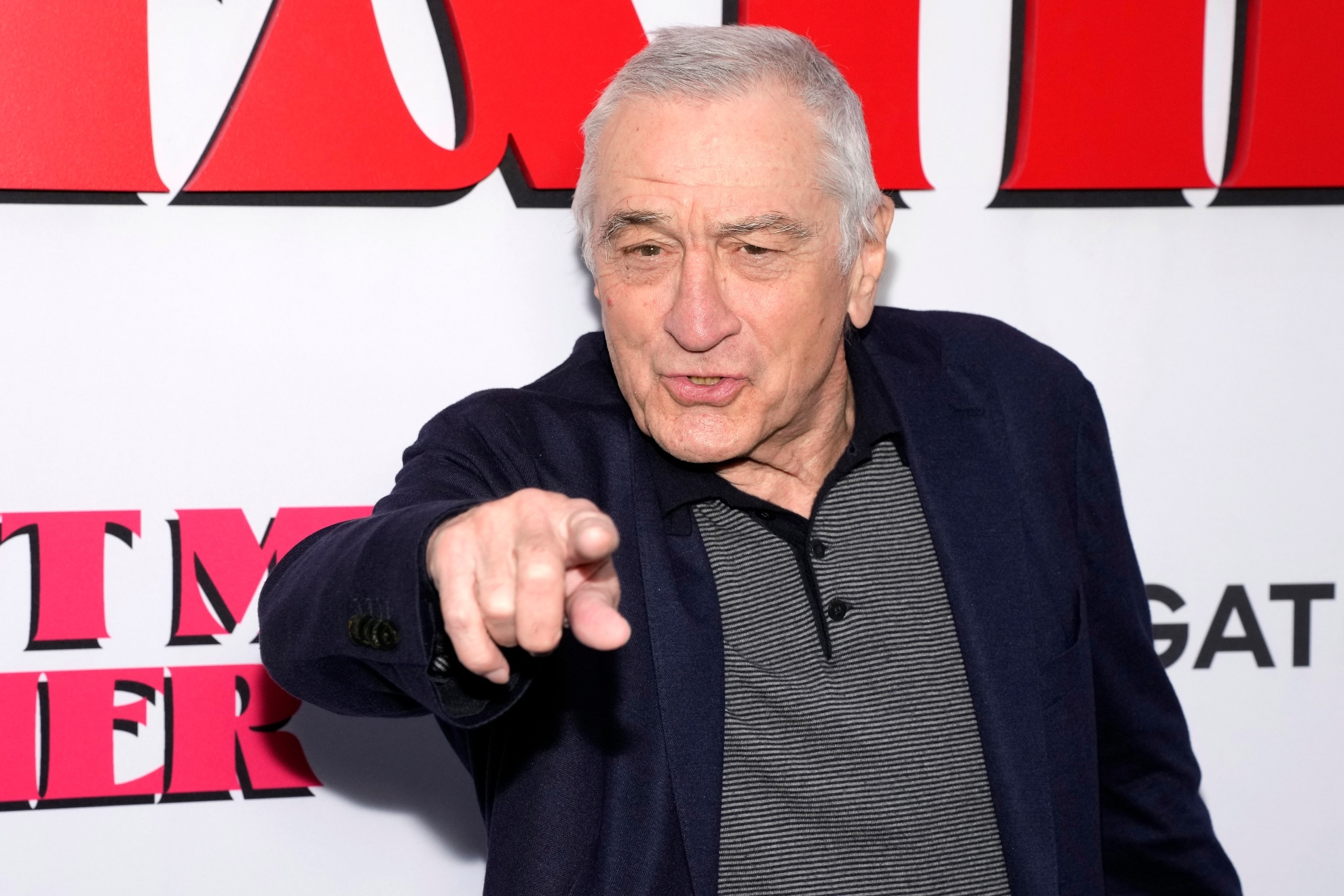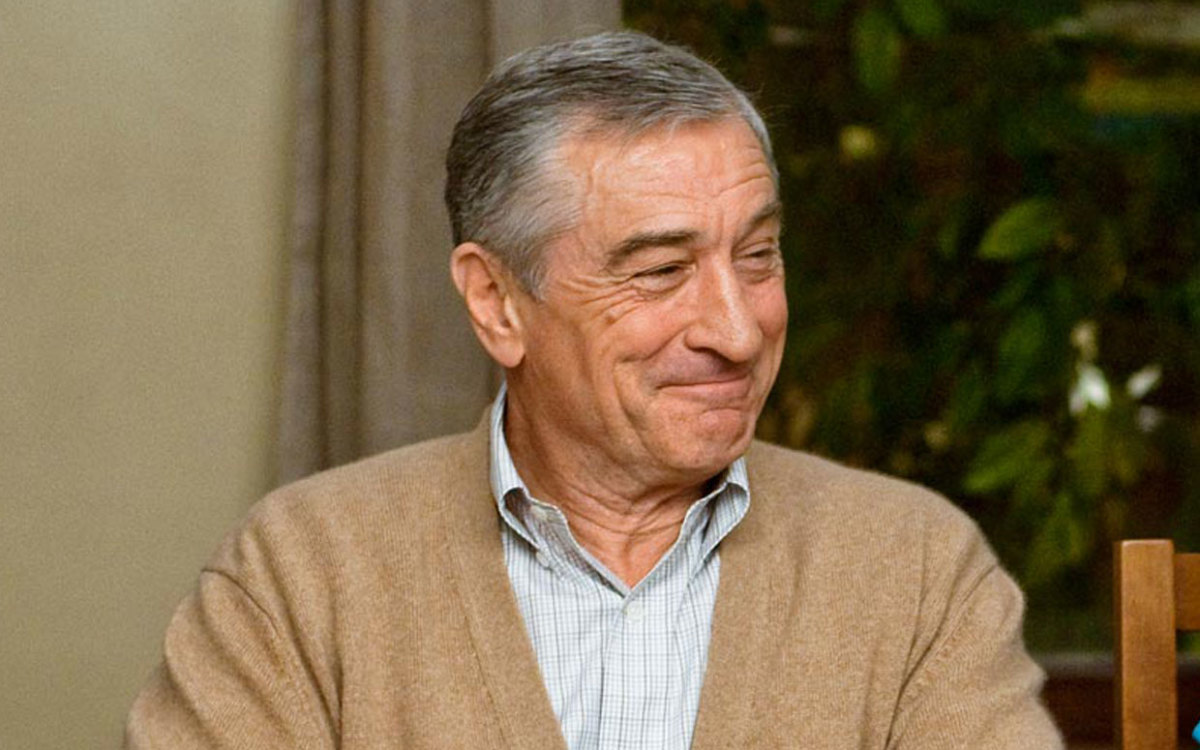Robert De Niro - The Multifaceted World Of The Acting Legend
Explore the illustrious career and captivating life of Hollywood legend Robert De Niro in this comprehensive article. Discover the enduring impact of Robert De Niro on the film industry and his legacy that continues to resonate with audiences worldwide.
Author:Emily SanchezReviewer:James PierceJan 08, 20249.2K Shares149.7K Views
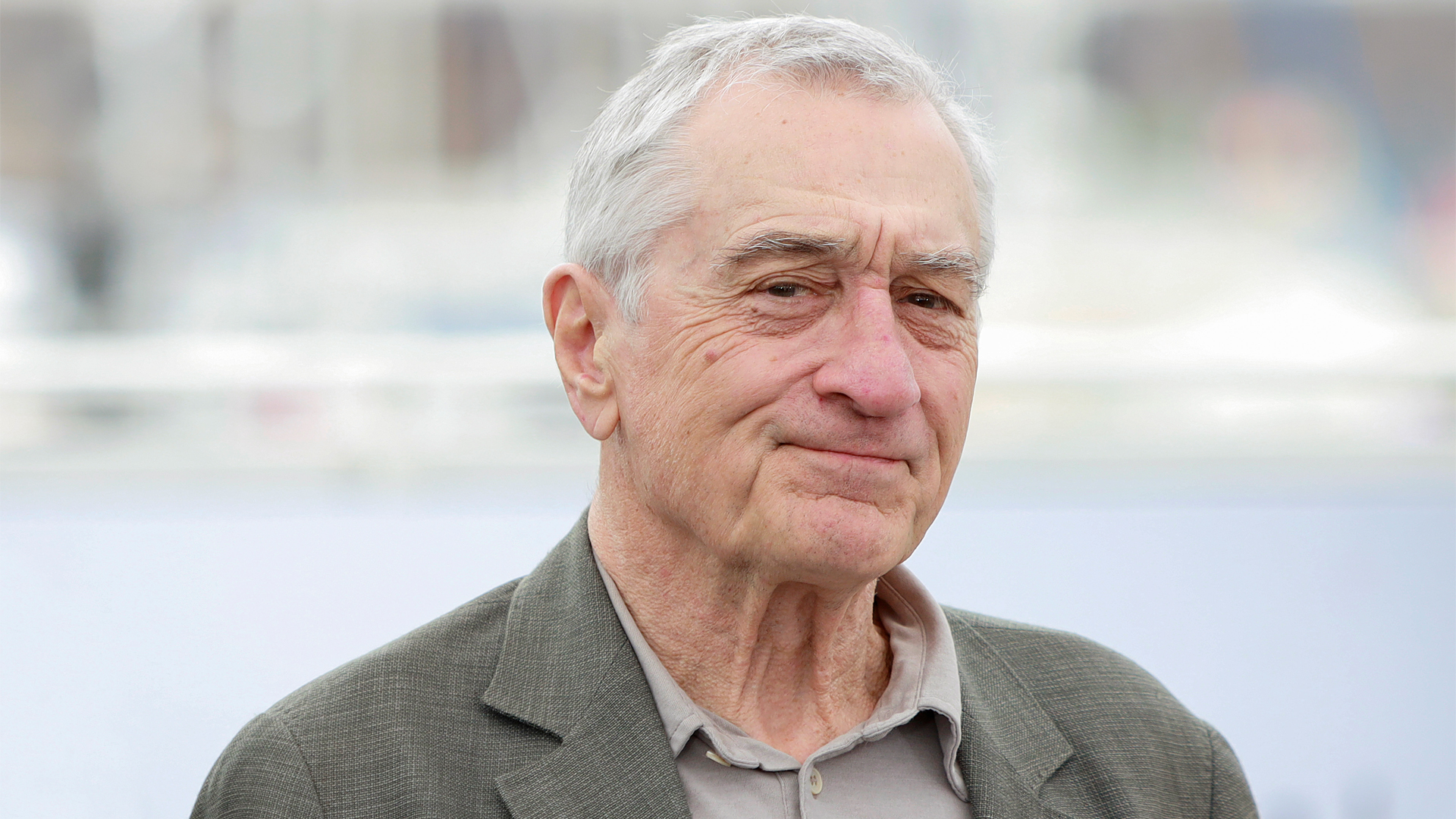
In the vast landscape of Hollywood's cinematic legends, few names shine as brightly as Robert De Niro. Born on August 17, 1943, in New York City, De Niro's journey through the world of acting has been nothing short of extraordinary. From his early days in prestigious acting schools to his iconic collaborations with legendary directors, De Niro has become a symbol of unparalleled talent and dedication to the craft of acting. This article delves into the life and career of Robert De Niro, a figure whose impact on the film industry continues to resonate across generations.
Quick Facts About Robert De Niro
| Name | Robert Anthony De Niro Jr. |
| Birthday | August 17, 1943 |
| Profession | Actor |
| Net worth | $500 million |
Early Life Of Robert De Niro
Robert Anthony De Niro Jr., born on August 17, 1943, in the vibrant city of New York, emerged from a fascinating tapestry of artistic lineage. His parents, the celebrated duo Virginia Admiral and Robert De Niro Sr., found their artistic connection amidst the inspiring landscapes of Hans Hofman’s renowned Provincetown, Massachusetts, painting classes.
Virginia, a brilliant painter and Berkeley graduate, carved her niche in the dynamic New York art scene of the 1940s and 1950s. Meanwhile, Robert Sr., a multi-talented painter, sculptor, and poet, earned widespread critical acclaim for his innovative work.
Despite their standing as the "golden couple" in the New York art circle, Virginia and Robert Sr. separated in 1945, when De Niro was a mere 2 years old. Raised predominantly by his mother, who juggled roles as a typesetter and printer to provide for her son, De Niro's early years were shaped by the indomitable spirit of his resilient mother.
As a child, De Niro's passion for cinema blossomed during movie outings with his father, particularly when captivated by the performances of Swedish actor Greta Garbo. His exposure to the world of acting began as a fortunate byproduct of his mother's part-time job at Maria Picator’s Dramatic Workshop, where he could attend children’s acting classes for free.
The stage beckoned at the tender age of 10, as De Niro made his debut as the Cowardly Lion in The Wizard of Oz. Subsequently admitted to New York's prestigious High School of Music and Art, a haven for visual and performance arts, he withdrew after a brief stint, finding the atmosphere overwhelming and intense.
Opting for a more unconventional path, De Niro enrolled at P.S. 41 in Greenwich Village but soon displayed disinterest in traditional education. During his teenage years, he found camaraderie in a mild Italian street gang, earning the moniker "Bobby Milk" due to his pale complexion.
Career Beginnings Of Robert De Niro
In 1960, following a soul-searching cross-country journey to California to visit relatives, Robert De Niro made a pivotal decision to drop out of high school and pursue his passion for acting.
His acting journey began at the Stella Adler Conservatory (later known as the Stella Adler Studio of Acting), where he immersed himself in the Stanislavski method, a technique centered around deep psychological character exploration. Under the intense tutelage of Stella Adler, a teacher known for her passionate and unconventional methods, De Niro thrived. Despite continuing high school classes at night, he never graduated, choosing instead to invest the money his mother had saved for his college education in his acting career.
De Niro briefly studied with Lee Strasberg at the Actor’s Studio in New York City, embarking on a series of auditions that showcased his versatility. Instead of conventional headshots, he presented a portfolio featuring 25 pictures of himself in various disguises, challenging the notion of being pigeonholed as an ethnic actor. After a brief appearance in the 1965 French film "Three Rooms in Manhattan," De Niro's true debut unfolded in the 1968 film "Greetings."
His breakthrough arrived in 1973 with two acclaimed films: "Bang the Drum Slowly," where he portrayed a terminally ill baseball catcher, and "Mean Streets," marking the start of a prolific collaboration with director Martin Scorsese. In this gritty portrayal of a street thug opposite Harvey Keitel, De Niro's performance was hailed by film critic Roger Ebert as "marvelous, filled with urgency and restless desperation."
Film Breakthrough Of Robert De Niro
In 1974, Robert De Niro solidified his standing as one of the nation's preeminent actors through his mesmerizing portrayal of Vito Corleone in "The Godfather Part II" (1974), directed by Francis Ford Coppola. De Niro's journey to this iconic role involved an earlier audition for the character of Sonny Corleone, eventually played by James Caan.
Although cast in a smaller role initially, De Niro chose to be released from "The Godfather" to take on "The Gang That Couldn't Shoot Straight" (1971). Coppola, remembering De Niro's previous audition, cast him as the young Vito in flashback scenes, a role that required him to learn Sicilian and earned him an Academy Award for Best Supporting Actor.
Two years later, De Niro delivered an unforgettable performance in Martin Scorsese's "Taxi Driver" (1976), portraying the haunting character of Travis Bickle. Alongside Jodie Foster, De Niro's preparation for the role involved a remarkable physical transformation, weight loss, firearm training, and an in-depth study of U.S. Army soldiers and taxi drivers. The now-famous line "Are you talkin' to me?"was an improvised gem that has since become one of the most iconic movie quotes. This role earned De Niro his second Academy Award nomination, this time for Best Actor.
De Niro continued to collaborate with esteemed directors, showcasing his versatility in films like "1900" (1976) with Bernardo Bertolucci, "The Last Tycoon" (1976) with Elia Kazan, and "New York, New York" (1977) with Scorsese. In "The Deer Hunter" (1978), he portrayed a steelworker profoundly affected by his experiences in the Vietnam War, earning another Best Actor Academy Award nomination.
One of De Niro's most physically demanding roles came in "Raging Bull" (1980), where he portrayed middleweight boxer Jake LaMotta. Putting on 60 pounds of muscle and training extensively with LaMotta, De Niro's dedication paid off with an Academy Award and Golden Globe for Best Actor in 1981. Critics praised his intense and unapologetic portrayal, with Ron Pennington of The Hollywood Reporternoting the courage displayed in portraying a character without softening his personality.
Beyond 1981, De Niro continued to diversify his roles, embracing an aspiring stand-up comedian in Scorsese's "The King of Comedy" (1983) and embodying a Jewish mobster in the epic "Once Upon a Time in America" (1984). Notable projects in the 1980s included the sci-fi art film "Brazil" (1985), the historically-inspired "The Mission" (1986), and the action-comedy "Midnight Run" (1988).
De Niro's meticulous attention to detail was evident in his portrayal of Al Capone in "The Untouchables" (1987), where he contacted Capone's real-life tailors for identical clothing and insisted on wearing the same type of silk underwear, even though it wasn't shown in the film.
Robert De Niro's Continued Success
Entering the 1990s, Robert De Niro continued his cinematic journey, leaving an indelible mark with iconic roles and diverse performances. Kicking off the decade with Martin Scorsese's "Goodfellas" (1990), De Niro portrayed the smooth-talking gangster Jimmy "The Gent" Conway, showcasing his seriousness as an actor by embracing a supporting role that added depth to the ambitious storytelling.
In the same year, he earned another Oscar nomination for his role in "Awakenings" (1990), where he portrayed a catatonic patient brought back to consciousness, displaying his versatility by mastering the physical nuances of the character. De Niro continued to delve into dramas, portraying a blacklisted director in "Guilty by Suspicion" and a fire chief in Ron Howard's "Backdraft," both from 1991.
A chilling reunion with Scorsese awaited in the 1991 remake of "Cape Fear," where De Niro transformed into a tattooed rapist, demonstrating his commitment by adhering to a rigorous diet and workout routine. This role, alongside Nick Nolte, Jessica Lange, and Juliette Lewis, earned him his sixth Academy Award nomination and became the highest-grossing collaboration with Scorsese, grossing over $182 million worldwide.
The 1990s showcased De Niro's versatility as he navigated from edgy comedies like "Night and the City" (1992) and "Mad Dog and Glory" (1993) to gripping dramas such as "This Boy's Life" (1993), where he portrayed an abusive father opposite a young Leonardo DiCaprio. His directorial debut, "A Bronx Tale" (1993), based on Chazz Palminteri's one-man play, marked another dimension of his involvement in the filmmaking process.
In 1995, Scorsese and De Niro collaborated once again, this time in "Casino," depicting mob life in Las Vegas. De Niro portrayed real-life figure Frank "Lefty" Rosenthal, showcasing his ability to immerse himself in complex characters. "Heat" (1995) followed a successful collaboration with Al Pacino, exploring the dynamics between a bank robber and a determined police detective.
Transitioning seamlessly between comedic and serious roles, De Niro ventured into new territory with the hilarious spoof "Analyze This" (1999), a mob-themed comedy that resonated with audiences and grossed over $100 million domestically. His comedic prowess continued with the successful "Meet the Parents" franchise, proving his ability to balance humor and depth.
As the 2000s unfolded, De Niro's repertoire expanded further with acclaimed performances in "Silver Linings Playbook" (2012), earning him a seventh Academy Award nomination, and "The Irishman" (2019), where he portrayed the titular hitman and alleged killer of Jimmy Hoffa. In 2023, De Niro and Scorsese reunited for "Killers of the Flower Moon," marking their tenth collaboration and featuring a stellar cast.
Awards And Accolades Of Robert De Niro
Robert De Niro, one of the most esteemed actors in the history of cinema, has amassed a staggering array of awards and accolades throughout his illustrious career. Recognized for his exceptional talent, versatility, and dedication to his craft, De Niro's trophy cabinet is a testament to his enduring impact on the film industry.
Academy Awards
- Best Supporting Actor for "The Godfather Part II" (1974)
- Best Actor for "Raging Bull" (1980)
Golden Globe Awards
- Best Actor in a Motion Picture - Drama for "Raging Bull" (1980)
- Cecil B. DeMille Award for outstanding contributions to the world of entertainment (2003)
BAFTA Awards
Best Actor in a Leading Role for "Raging Bull" (1980)
Screen Actors Guild Awards
Lifetime Achievement Award (2003)
Cannes Film Festival
Best Actor for "Taxi Driver" (1976)
Berlin International Film Festival
Silver Bear for Best Actor for "The Deer Hunter" (1978)
Venice Film Festival
Volpi Cup for Best Actor for "New York, New York" (1977)
AARP's Movies For Grown-Ups Awards
Best Grown-Up Love Story for "Silver Linings Playbook" (2013)
Kennedy Center Honors
Recognized for his lifetime contributions to American culture through the performing arts (2009)
Tribeca Film Festival
Founder's Award for Best Narrative Feature for "A Bronx Tale" (1993)
Honorary Degrees
- Honorary Doctor of Fine Arts degree from Brown University (1996)
- Honorary Doctor of Fine Arts degree from Bates College (2007)
Business Ventures Of Robert De Niro
Co-founding the globally renowned Nobu restaurant chain alongside Nobu Matsuhisa, De Niro has played a pivotal role in its expansion, with over 40 locations worldwide. The Nobu empire, under his stewardship, stands as a testament to his entrepreneurial acumen, generating several hundred million dollars in revenue annually.
In addition to his culinary ventures, De Niro is a co-owner of The Greenwich Hotel in New York, further diversifying his business portfolio. Notably, in 2017, De Niro teamed up with Australian billionaire James Packer to announce "Paradise Found," a planned luxury resort set to grace the Eastern Caribbean island of Barbuda.
Robert De Niro's Net Worth
Renowned for his contributions to the American film and stage, Robert De Niro is not only a distinguished actor, producer, and director but also a shrewd entrepreneur, amassing a staggering net worth of $500 million.
A significant portion of his financial success can be attributed to his role as the co-founder of the upscale Nobu franchise, which encompasses high-end sushi restaurants and hotels with a global footprint exceeding 40 locations. The Nobu empire, overseen by De Niro, is a revenue-generating powerhouse, consistently amassing several hundred million dollars annually.
Beyond his cinematic endeavors, De Niro's financial trajectory has been further propelled by a judicious blend of film salaries and business dividends. Between 2004 and 2018, he accrued an impressive $250 to $300 million, a testament to the financial rewards reaped from both his artistic and entrepreneurial pursuits.
Insiders within the industry shed light on De Niro's commanding presence in negotiations, indicating that his earnings per project hover around a formidable $10 million.
Divorce Battle Of Robert De Niro
In June 2019, the divorce saga between Robert De Niro and his ex-wife Grace Hightower took a compelling turn as legal filings unveiled the intricate details of their financial entanglements.
According to Grace's filing, Robert De Niro boasts a net worth of at least $500 million, with a staggering income ranging between $250 and $300 million from 2004 to 2018, primarily fueled by the flourishing Nobu empire. A prenuptial agreement, inked in 2004, stipulated financial terms in the event of a divorce, entitling Grace to $1 million annually for each year of their marriage, a $6 million apartment, $500,000 in cash, and half the value of their primary residence. However, Ms. Hightower, invoking the legal arena, sought a substantial 50% of the actor's fortune, alleging that De Niro had obscured financial details from her for over a decade.
Unveiling further intricacies, a closer examination of the prenup revealed an intriguing clause, mandating De Niro to pay Grace $1 million in any year where his earnings exceeded $15 million - a common occurrence given his formidable income. If his earnings dwindled, proportional adjustments were to be made.
The divorce drama continued into July 2020, with Grace filing a complaint alleging that De Niro had unjustly halved her monthly American Express allowance from $100,000 to $50,000. De Niro's counterargument contended that the financial fallout from the COVID-19 crisis had severely impacted his income and business ventures, forcing him to borrow $500,000 to address mounting debts within the Nobu empire. His lawyers asserted that Nobu experienced significant losses, including $3 million in April and $1.9 million in May, projecting a less lucrative 2020 with an estimated income of $7.5 million.
Hightower's legal team countered, accusing De Niro of leveraging the pandemic to impose financial hardships on his ex-wife. The judge, navigating this complex web, ruled that reducing the American Express allowance to $50,000 was reasonable. Simultaneously, De Niro was directed to allocate $75,000 to assist Grace in securing a summer residence, a compromise reached as De Niro currently resides in their former primary home.
Real Estate Properties Of Robert De Niro
Gardiner, New York Mansion - $6 Million
Despite his global fame as one of Hollywood's finest actors, Robert De Niro chooses to maintain a low-key personal life, favoring family simplicity over extravagant Hollywood soirées. However, his choice of residence is anything but modest. One such property is located in Gardiner, New York, a state close to his heart as his birthplace.
Purchased in 1997 for $1.5 million, this 2,222-square-foot estate sprawls over 98 acres, originally an 18th-century farmhouse that De Niro transformed into a lavish abode. Renovations resulted in six bedrooms, seven bathrooms, and a barn converted into a sprawling recreation center, boasting a boxing room, game room, gym, basketball court, swimming pool, sauna, and a small film studio. The entire property, now assessed at $6 million, also includes guest houses, a tennis court, ski slope, and office space converted from barns.
Montauk Beachfront Property - $8 Million
Situated in Montauk at the east end of Long Island, this beachfront property holds sentimental value for De Niro. Originally owned by his father, a renowned abstract expressionist painter, the 2,278-square-foot home now sits on 1.5 acres of prime beachfront real estate.
The property, valued at $8 million, underwent an attempted renovation by De Niro in 2017, seeking to replace it with a larger house. However, his request was denied, leading to a legal battle that ended with the preservation of the original 1950s-designed home.
West Village Penthouse In Manhattan - $22.995 Million
In the heart of Greenwich Village, De Niro's most opulent New York property stands as a testament to luxury. Acquiring this penthouse in 2012, the actor's former residence boasts five bedrooms, 4.5 bathrooms, and a sprawling 11,000-square-foot living space. The prime location and extravagant features justified its staggering $22.995 million price tag.
Floor-to-ceiling windows, a two-story foyer, landscape terraces with Hudson River and city skyline views, a library, home office, media room, dining room, a living room fireplace, and an outdoor seating area define the grandeur of this West Village gem. Originally listed for $39.5 million in 2015, the property eventually sold for $18 million in April 2020.
Philanthropic Efforts Of Robert De Niro
Robert De Niro, renowned for his cinematic prowess, extends his impact beyond the silver screen through a range of philanthropic endeavors. While the actor is known for maintaining a relatively private personal life, his commitment to various charitable causes reflects a deep sense of social responsibility.
One notable initiative is the Tribeca Film Institute, co-founded by De Niro in the aftermath of the September 11, 2001 attacks. The institute aims to support filmmakers and foster the growth of the film industry, particularly in New York City. Through programs and grants, it provides opportunities for emerging talents and contributes to the cultural enrichment of the community.
Additionally, De Niro has been actively involved in the fight against cancer. He is a co-founder of the Tribeca Grill, a restaurant in New York City, which hosts the annual "Triumph for Teens" gala. The event raises funds for the Children's Aid Society's adolescent substance abuse programs. This commitment to supporting vulnerable youth underscores De Niro's dedication to addressing societal challenges.
Personal Life Of Robert De Niro
In 1976, De Niro embarked on his first marital journey with actress and singer Diahnne Abbott. The union bore fruit in the form of a son, Raphael De Niro, born in 1976, who later carved his niche in the real estate industry.
De Niro also embraced fatherhood for Abbott's daughter from a previous relationship, Drena De Niro, who ventured into the realms of acting and modeling. Despite the shared familial joys, the couple's journey reached a crossroads, leading to their separation in 1988.
While still entangled in the complexities of marriage with Abbott, De Niro found companionship with former model Toukie Smith. This relationship resulted in a unique chapter of De Niro's fatherhood, marked by the birth of twin sons, Julian Henry and Aaron Kendrick De Niro, born through in vitro fertilization and delivered by a surrogate mother in 1995.
In 1997, De Niro embarked on a new chapter by exchanging vows with Grace Hightower, an actress, singer, and philanthropist. The union welcomed the arrival of their son, Elliot De Niro, in 1998. However, the marital journey faced turbulence, leading to a near-divorce in 1999.
Despite the challenges, the couple chose to rekindle their commitment, showcasing resilience in the face of adversity. The family expanded in 2011 with the birth of their daughter, Helen Grace De Niro, delivered via surrogate. Yet, the ebb and flow of relationships took its toll, and De Niro and Hightower found themselves separated once again in 2018, ultimately finalizing their divorce in 2021.
Interesting Facts About Robert De Niro
- Robert De Niro is renowned for his dedication to method acting. For his role in "Raging Bull," he famously gained around 60 pounds to portray the older Jake LaMotta and then went through an intense physical training regimen to convincingly portray LaMotta in his prime.
- De Niro co-founded the Tribeca Film Festival in 2002 in response to the September 11 attacks, aiming to revitalize the Lower Manhattan community. The festival has since become a major cultural event, celebrating film, music, and culture.
- In his youth, De Niro had a part-time job as a shoeshiner. His father, a struggling artist, encouraged him to pursue acting instead. This early experience likely fueled his work ethic and determination in his later career.
- De Niro is known for his commitment to authenticity in his roles. For "The Godfather Part II," he learned to speak Sicilian. He is also fluent in Italian, a skill he put to use in movies like "The Godfather Part II" and "The Deer Hunter."
- Beyond his acting prowess, De Niro is a successful entrepreneur. He is a co-founder of the upscale Nobu restaurant chain, which has expanded globally and is renowned for its fusion of Japanese and Peruvian cuisine.
- De Niro is one of the very few actors to win an Academy Award for portraying the same character in two different films. He achieved this with his role as Vito Corleone in "The Godfather Part II" and later reprised the character in "The Godfather Part III."
- De Niro has collaborated with director Martin Scorsese on numerous occasions, creating iconic films such as "Taxi Driver," "Raging Bull," and "Goodfellas." Their artistic partnership is widely celebrated in the film industry.
- In 2016, De Niro was awarded the Presidential Medal of Freedom by President Barack Obama. This prestigious honor acknowledged his contributions to the arts and his impact on American culture.
- De Niro has been a mentor to several actors, including Leonardo DiCaprio. They have worked together on multiple projects, showcasing a bond that extends beyond the screen.
- Despite advancing age, De Niro has maintained an impressive commitment to fitness. In his early 70s, he completed a triathlon, showcasing both physical and mental resilience.
People Also Ask
How Many Oscars Has Robert De Niro Won?
Robert De Niro has won two Academy Awards. He received the Best Supporting Actor Oscar for "The Godfather Part II" (1974) and the Best Actor Oscar for "Raging Bull" (1980).
Has Robert De Niro Ever Directed A Film?
Yes, Robert De Niro made his directorial debut with the film "A Bronx Tale" in 1993. He also directed "The Good Shepherd" (2006) and "The Irishman" (2019), among others.
How Did Robert De Niro Prepare For His Role In Taxi Driver?
To prepare for his iconic role in "Taxi Driver," Robert De Niro lost 30 pounds, underwent firearm training, and studied the behaviors of both U.S. Army soldiers and taxi drivers.
Is Robert De Niro Italian?
Yes, Robert De Niro is of Italian descent. He was born to parents of Italian heritage in New York City.
How Did Robert De Niro Get Into Acting?
Robert De Niro's interest in acting began in his childhood. He started with children's acting classes and later studied at the Stella Adler Conservatory. His official acting debut came in the 1968 film "Greetings."
Conlusion - Robert De Niro
As we reflect on the cinematic journey of Robert De Niro, it becomes evident that his legacy is not just a collection of roles but a testament to the transformative power of acting. His ability to inhabit characters with authenticity, his commitment to pushing the boundaries of his craft, and his enduring presence in Hollywood all contribute to a legacy that transcends time.
Whether as the brooding Vito Corleone, the relentless Jake LaMotta, or the endearing Jack Byrnes, De Niro has left an indelible mark on the hearts of moviegoers worldwide. As the curtain falls on this exploration of his life and career, Robert De Niro stands as a true titan of the silver screen, a name forever etched in the annals of cinematic history.
Jump to
Quick Facts About Robert De Niro
Early Life Of Robert De Niro
Career Beginnings Of Robert De Niro
Film Breakthrough Of Robert De Niro
Robert De Niro's Continued Success
Awards And Accolades Of Robert De Niro
Business Ventures Of Robert De Niro
Robert De Niro's Net Worth
Divorce Battle Of Robert De Niro
Real Estate Properties Of Robert De Niro
Philanthropic Efforts Of Robert De Niro
Personal Life Of Robert De Niro
Interesting Facts About Robert De Niro
People Also Ask
Conlusion - Robert De Niro
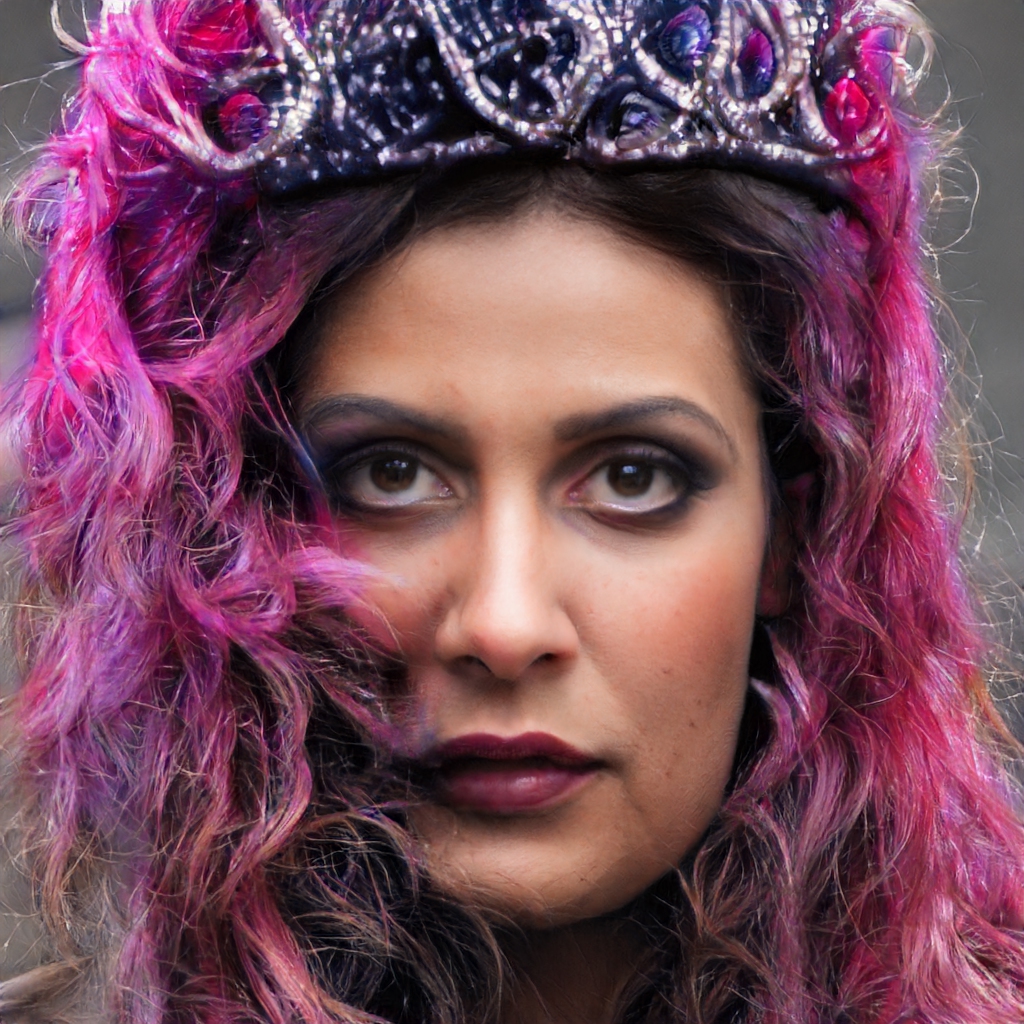
Emily Sanchez
Author

James Pierce
Reviewer
Latest Articles
Popular Articles
